Javier Fumanal-Idocin
Crisp complexity of fuzzy classifiers
Apr 22, 2025Abstract:Rule-based systems are a very popular form of explainable AI, particularly in the fuzzy community, where fuzzy rules are widely used for control and classification problems. However, fuzzy rule-based classifiers struggle to reach bigger traction outside of fuzzy venues, because users sometimes do not know about fuzzy and because fuzzy partitions are not so easy to interpret in some situations. In this work, we propose a methodology to reduce fuzzy rule-based classifiers to crisp rule-based classifiers. We study different possible crisp descriptions and implement an algorithm to obtain them. Also, we analyze the complexity of the resulting crisp classifiers. We believe that our results can help both fuzzy and non-fuzzy practitioners understand better the way in which fuzzy rule bases partition the feature space and how easily one system can be translated to another and vice versa. Our complexity metric can also help to choose between different fuzzy classifiers based on what the equivalent crisp partitions look like.
Reliable Classification with Conformal Learning and Interval-Type 2 Fuzzy Sets
Apr 21, 2025Abstract:Classical machine learning classifiers tend to be overconfident can be unreliable outside of the laboratory benchmarks. Properly assessing the reliability of the output of the model per sample is instrumental for real-life scenarios where these systems are deployed. Because of this, different techniques have been employed to properly quantify the quality of prediction for a given model. These are most commonly Bayesian statistics and, more recently, conformal learning. Given a calibration set, conformal learning can produce outputs that are guaranteed to cover the target class with a desired significance level, and are more reliable than the standard confidence intervals used by Bayesian methods. In this work, we propose to use conformal learning with fuzzy rule-based systems in classification and show some metrics of their performance. Then, we discuss how the use of type 2 fuzzy sets can improve the quality of the output of the system compared to both fuzzy and crisp rules. Finally, we also discuss how the fine-tuning of the system can be adapted to improve the quality of the conformal prediction.
Compact Rule-Based Classifier Learning via Gradient Descent
Feb 03, 2025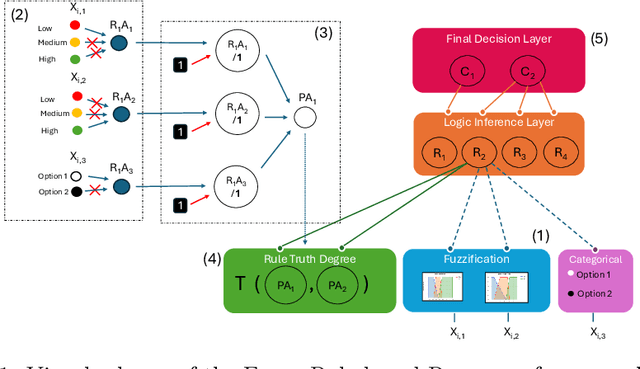

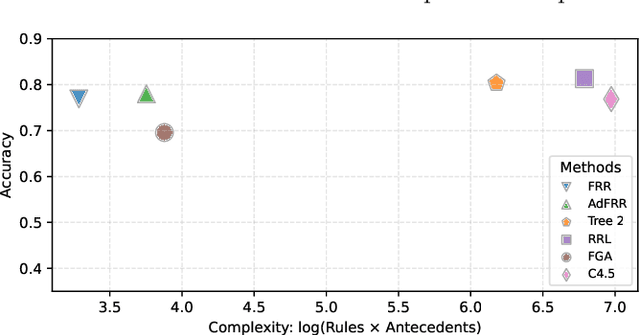
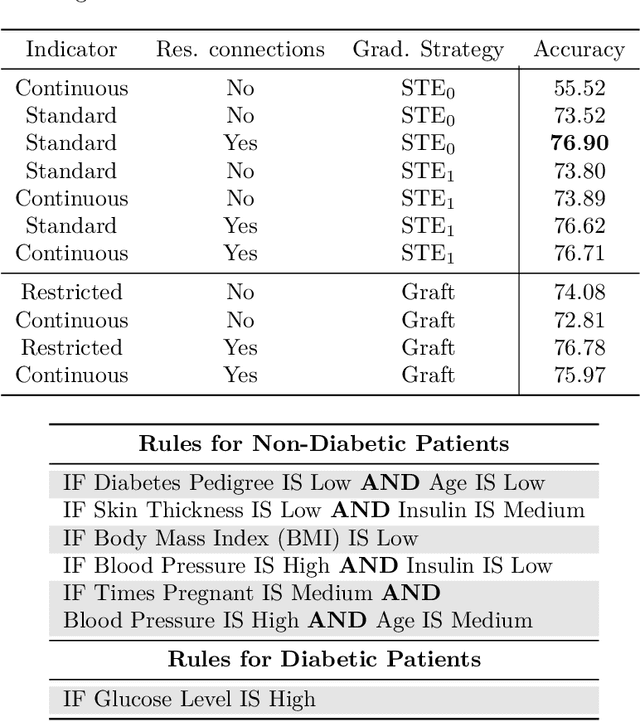
Abstract:Rule-based models play a crucial role in scenarios that require transparency and accountable decision-making. However, they primarily consist of discrete parameters and structures, which presents challenges for scalability and optimization. In this work, we introduce a new rule-based classifier trained using gradient descent, in which the user can control the maximum number and length of the rules. For numerical partitions, the user can also control the partitions used with fuzzy sets, which also helps keep the number of partitions small. We perform a series of exhaustive experiments on $40$ datasets to show how this classifier performs in terms of accuracy and rule base size. Then, we compare our results with a genetic search that fits an equivalent classifier and with other explainable and non-explainable state-of-the-art classifiers. Our results show how our method can obtain compact rule bases that use significantly fewer patterns than other rule-based methods and perform better than other explainable classifiers.
ARTxAI: Explainable Artificial Intelligence Curates Deep Representation Learning for Artistic Images using Fuzzy Techniques
Aug 29, 2023



Abstract:Automatic art analysis employs different image processing techniques to classify and categorize works of art. When working with artistic images, we need to take into account further considerations compared to classical image processing. This is because such artistic paintings change drastically depending on the author, the scene depicted, and their artistic style. This can result in features that perform very well in a given task but do not grasp the whole of the visual and symbolic information contained in a painting. In this paper, we show how the features obtained from different tasks in artistic image classification are suitable to solve other ones of similar nature. We present different methods to improve the generalization capabilities and performance of artistic classification systems. Furthermore, we propose an explainable artificial intelligence method to map known visual traits of an image with the features used by the deep learning model considering fuzzy rules. These rules show the patterns and variables that are relevant to solve each task and how effective is each of the patterns found. Our results show that our proposed context-aware features can achieve up to $6\%$ and $26\%$ more accurate results than other context- and non-context-aware solutions, respectively, depending on the specific task. We also show that some of the features used by these models can be more clearly correlated to visual traits in the original image than others.
The Concept of Semantic Value in Social Network Analysis: an Application to Comparative Mythology
Sep 13, 2021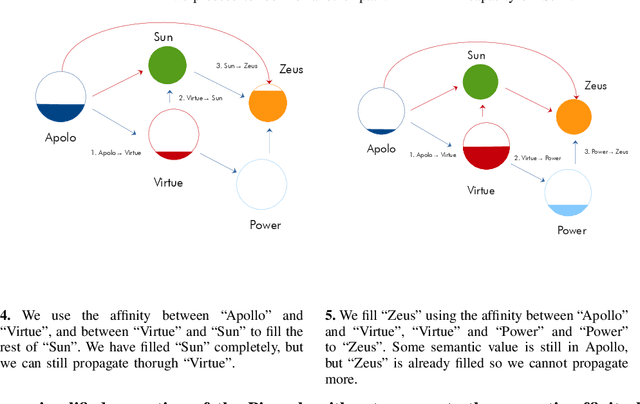
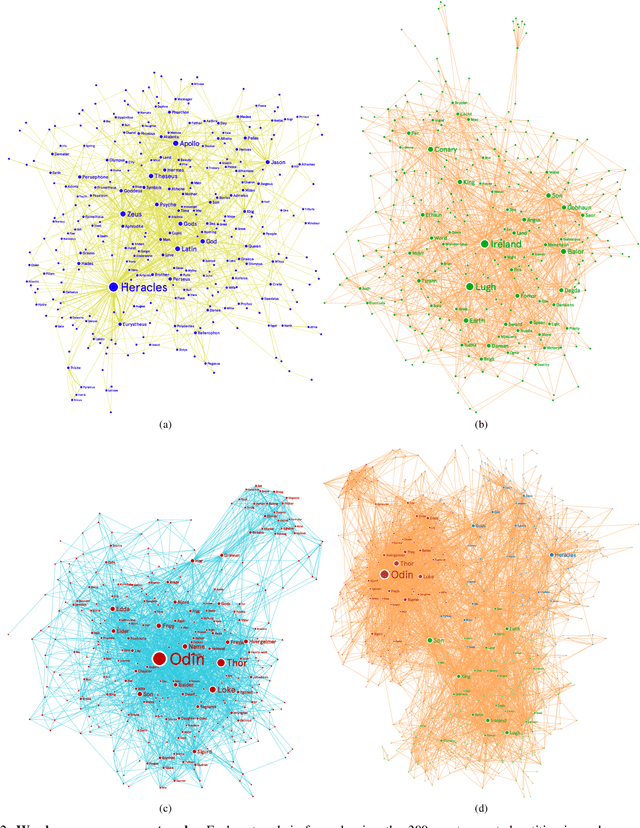

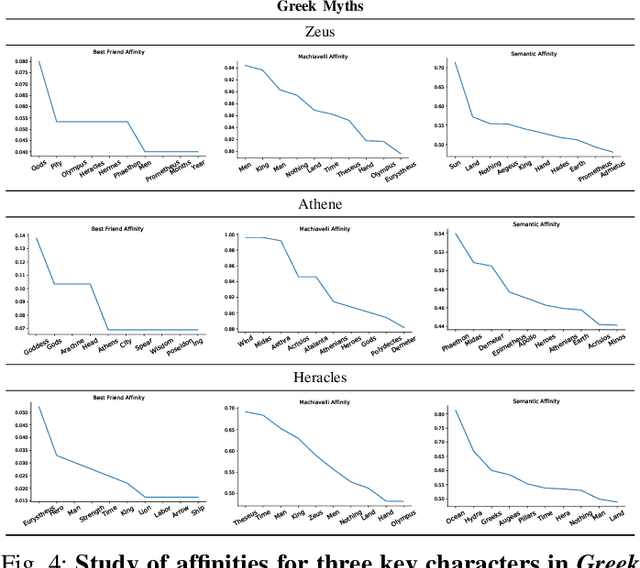
Abstract:Human sciences have traditionally relied on human reasoning and intelligence to infer knowledge from a wide range of sources, such as oral and written narrations, reports, and traditions. Here we develop an extension of classical social network analysis approaches to incorporate the concept of meaning in each actor, as a mean to quantify and infer further knowledge from the original source of the network. This extension is based on a new affinity function, the semantic affinity, that establishes fuzzy-like relationships between the different actors in the network, using combinations of affinity functions. We also propose a new heuristic algorithm based on the shortest capacity problem to compute this affinity function. We use these concept of meaning and semantic affinity to analyze and compare the gods and heroes from three different classical mythologies: Greek, Celtic and Nordic. We study the relationships of each individual mythology and those of common structure that is formed when we fuse the three of them. We show a strong connection between the Celtic and Nordic gods and that Greeks put more emphasis on heroic characters rather than deities. Our approach provides a technique to highlight and quantify important relationships in the original domain of the network not deducible from its structural properties.
A fusion method for multi-valued data
Jan 25, 2021
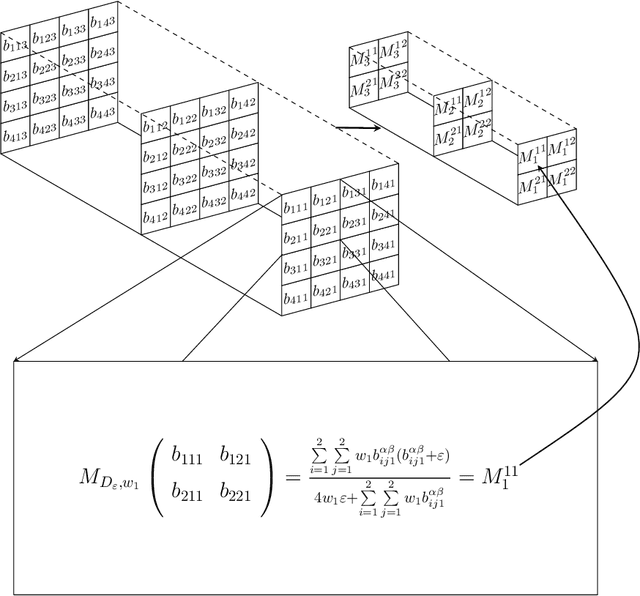


Abstract:In this paper we propose an extension of the notion of deviation-based aggregation function tailored to aggregate multidimensional data. Our objective is both to improve the results obtained by other methods that try to select the best aggregation function for a particular set of data, such as penalty functions, and to reduce the temporal complexity required by such approaches. We discuss how this notion can be defined and present three illustrative examples of the applicability of our new proposal in areas where temporal constraints can be strict, such as image processing, deep learning and decision making, obtaining favourable results in the process.
Motor-Imagery-Based Brain Computer Interface using Signal Derivation and Aggregation Functions
Jan 18, 2021



Abstract:Brain Computer Interface technologies are popular methods of communication between the human brain and external devices. One of the most popular approaches to BCI is Motor Imagery. In BCI applications, the ElectroEncephaloGraphy is a very popular measurement for brain dynamics because of its non-invasive nature. Although there is a high interest in the BCI topic, the performance of existing systems is still far from ideal, due to the difficulty of performing pattern recognition tasks in EEG signals. BCI systems are composed of a wide range of components that perform signal pre-processing, feature extraction and decision making. In this paper, we define a BCI Framework, named Enhanced Fusion Framework, where we propose three different ideas to improve the existing MI-based BCI frameworks. Firstly, we include aan additional pre-processing step of the signal: a differentiation of the EEG signal that makes it time-invariant. Secondly, we add an additional frequency band as feature for the system and we show its effect on the performance of the system. Finally, we make a profound study of how to make the final decision in the system. We propose the usage of both up to six types of different classifiers and a wide range of aggregation functions (including classical aggregations, Choquet and Sugeno integrals and their extensions and overlap functions) to fuse the information given by the considered classifiers. We have tested this new system on a dataset of 20 volunteers performing motor imagery-based brain-computer interface experiments. On this dataset, the new system achieved a 88.80% of accuracy. We also propose an optimized version of our system that is able to obtain up to 90,76%. Furthermore, we find that the pair Choquet/Sugeno integrals and overlap functions are the ones providing the best results.
Interval-valued aggregation functions based on moderate deviations applied to Motor-Imagery-Based Brain Computer Interface
Nov 19, 2020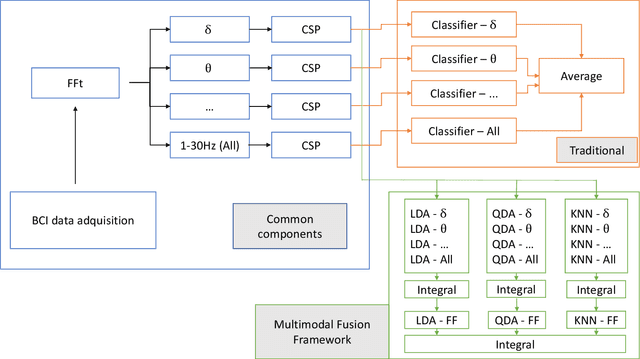



Abstract:In this work we study the use of moderate deviation functions to measure similarity and dissimilarity among a set of given interval-valued data. To do so, we introduce the notion of interval-valued moderate deviation function and we study in particular those interval-valued moderate deviation functions which preserve the width of the input intervals. Then, we study how to apply these functions to construct interval-valued aggregation functions. We have applied them in the decision making phase of two Motor-Imagery Brain Computer Interface frameworks, obtaining better results than those obtained using other numerical and intervalar aggregations.
Adaptive binarization based on fuzzy integrals
Mar 04, 2020

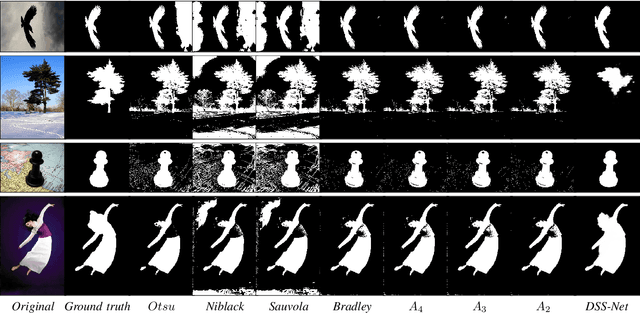
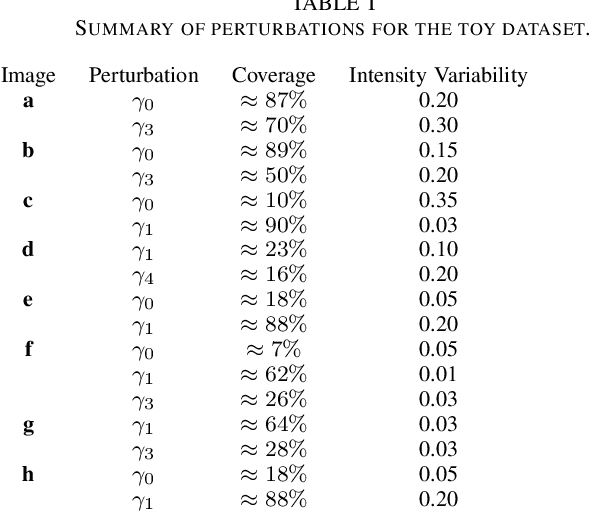
Abstract:Adaptive binarization methodologies threshold the intensity of the pixels with respect to adjacent pixels exploiting the integral images. In turn, the integral images are generally computed optimally using the summed-area-table algorithm (SAT). This document presents a new adaptive binarization technique based on fuzzy integral images through an efficient design of a modified SAT for fuzzy integrals. We define this new methodology as FLAT (Fuzzy Local Adaptive Thresholding). The experimental results show that the proposed methodology have produced an image quality thresholding often better than traditional algorithms and saliency neural networks. We propose a new generalization of the Sugeno and CF 1,2 integrals to improve existing results with an efficient integral image computation. Therefore, these new generalized fuzzy integrals can be used as a tool for grayscale processing in real-time and deep-learning applications. Index Terms: Image Thresholding, Image Processing, Fuzzy Integrals, Aggregation Functions
 Add to Chrome
Add to Chrome Add to Firefox
Add to Firefox Add to Edge
Add to Edge